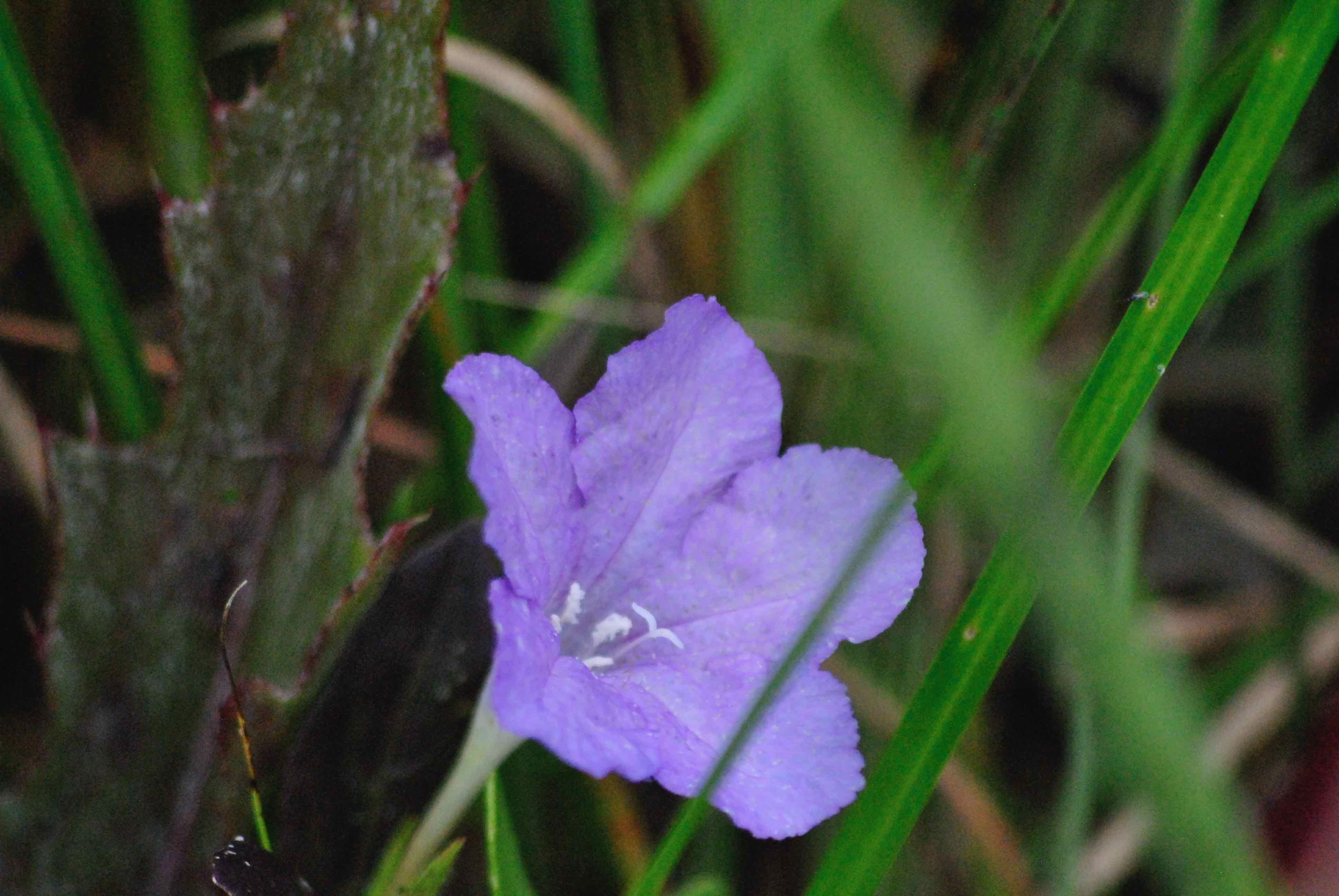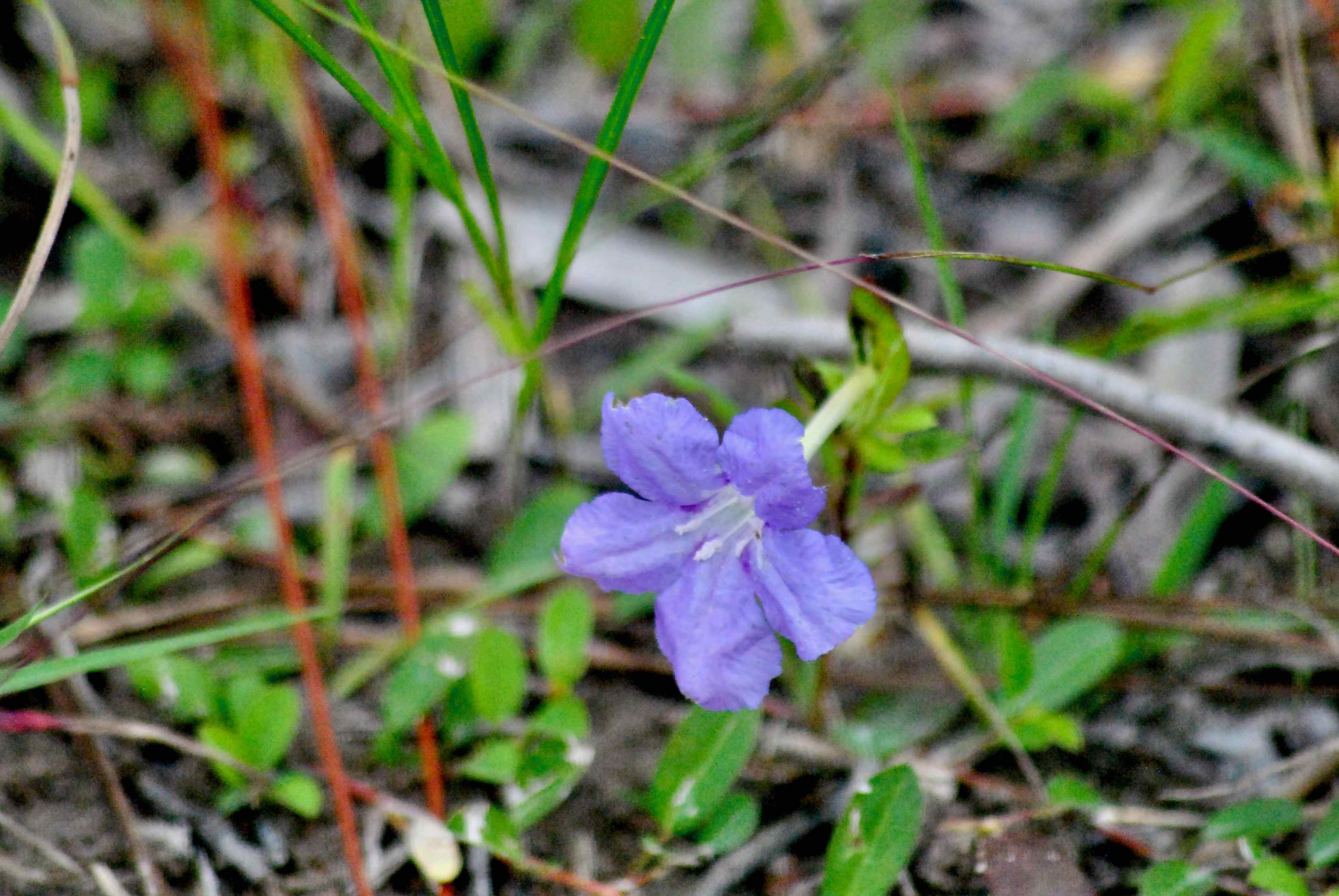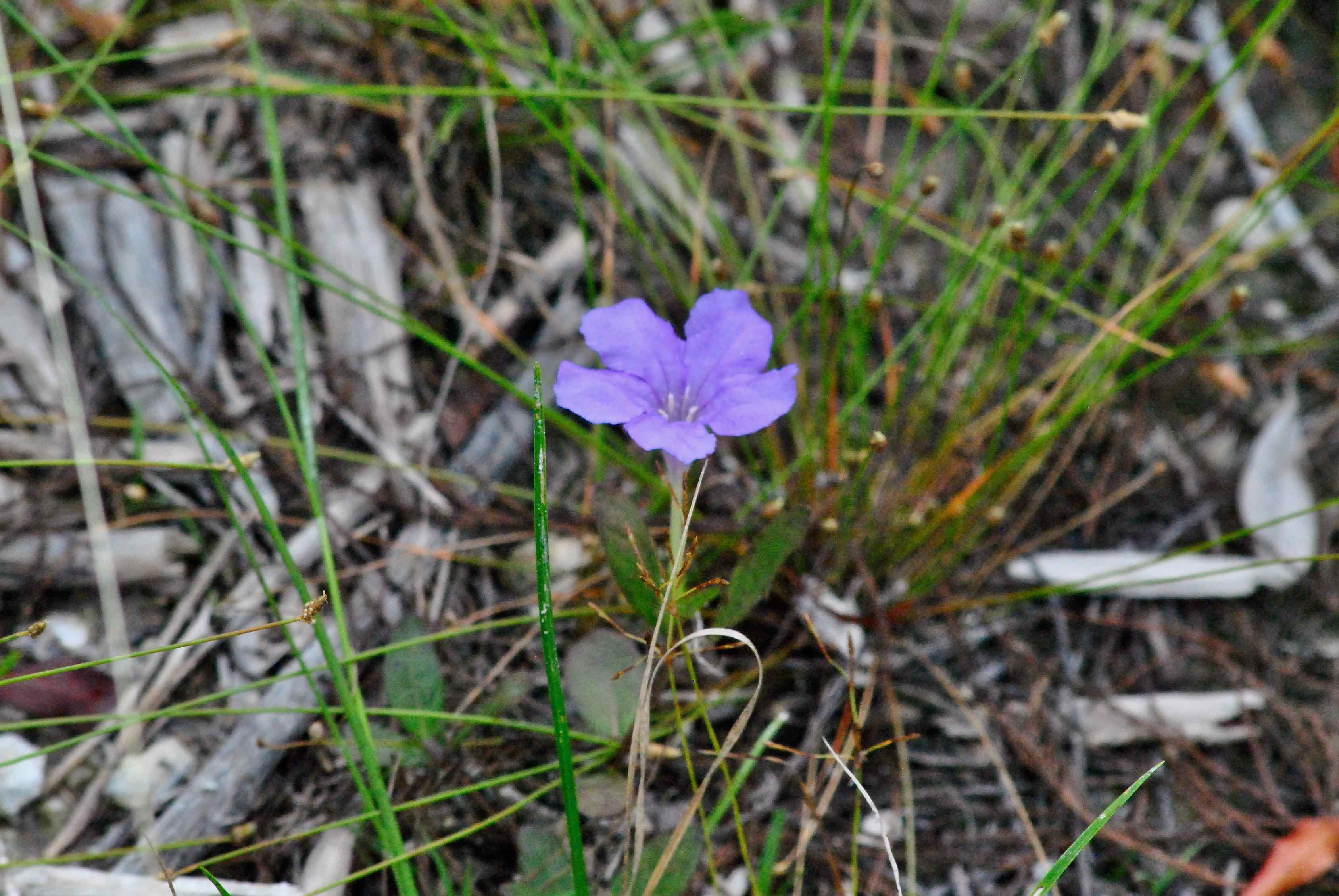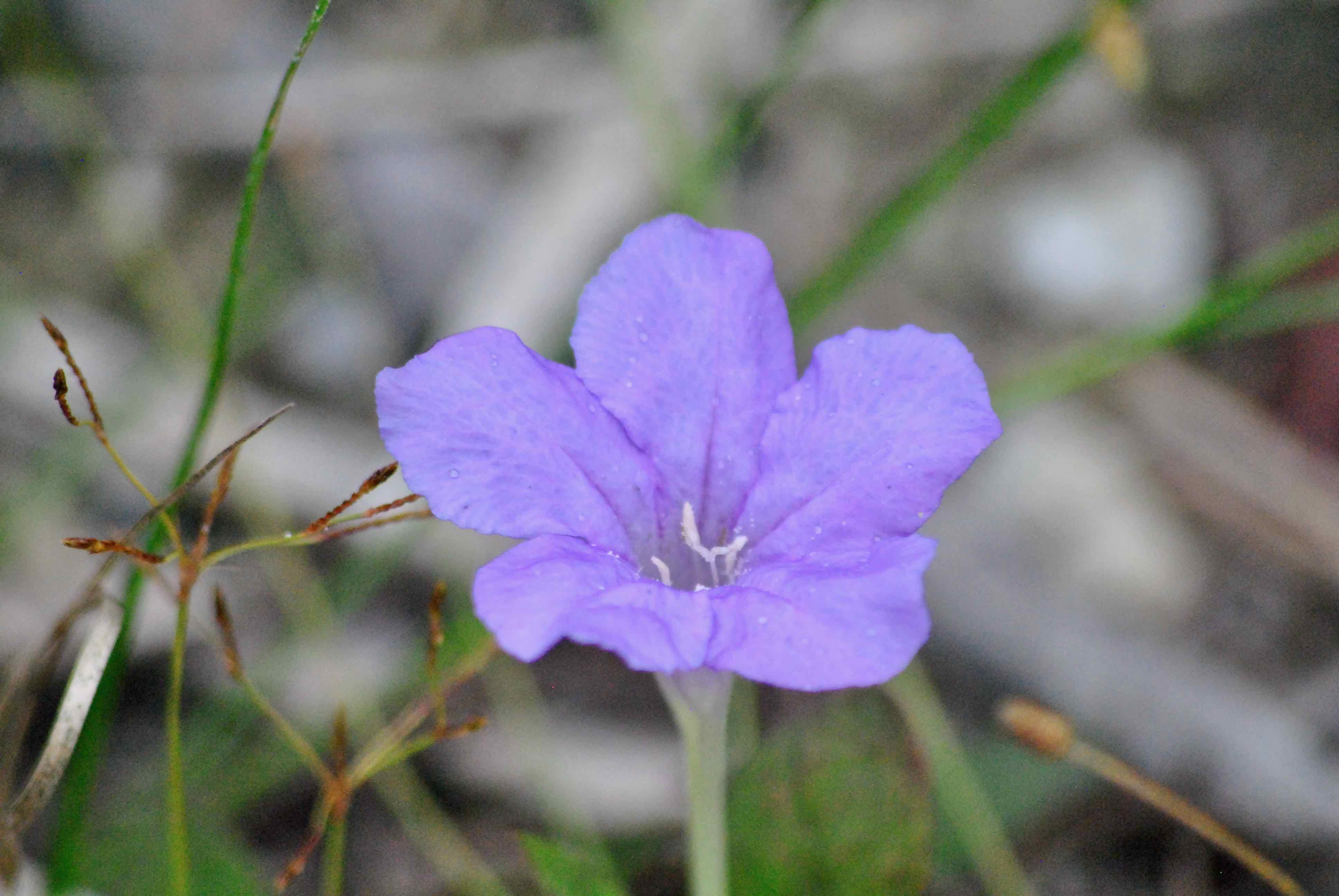
Thickleaf wild petunia, photographed at Florida Panther National Wildlife Refuge, Collier County, in October 2015. Others at Big Cypress National Preserve.
The remarkable thing about thickleaf wild petunia is its size: it so short it barely gets off the ground, yet it puts out a flower almost as large as the rest of the plant. And a quite attractive one at that.
Thickleaf wild petunia is a Florida native; in fact, it's found only in the pinelands and flatwoods of the southern end of South Florida – Collier, Lee, Miami-Dade and Monroe counties.
It's scientific name: Ruellia succulenta. Succulenta refers to the plant's rather thick, succulent-like leaves. Thickleaf petunia is only distantly related to the petunias found found in garden centers and flower gardens throughout the country.
A quick taxonomic note: thickleaf wild petunia has a cousin, Carolina wild petunia, Ruellia caroliniensis, which is similar looking, but is twice as tall or more. It also has a much wider natural range that extends as far north as Pennsylvania, Ohio and New Jersey and as far west as Texas, Oklahoma and Louisiana.
The two are so similar, that some, including the United States Department of Agriculture, consider them as the same species, with our guy here being a subspecies, or variation, of the Carolina petunia.
Delray Beach's Institute for Regional Conservation classifies them as separate species, however, and so do we, for whatever it's worth. Now back to our regular programming.
Thickleaf wild petunia gets all of four to eight inches off the ground. It can be spreading or erect in habit. It can form patches but it is not an aggressive spreader. It likes limestone or sandy soils and full sun. The leaves can have a red or purple hue; they are eliptical or lance-shaped and grow opposite on the stem.
Of course, the real show is the flower, which has five lobes and can be as big as an inch-and-a-half across. Colors range from lavender to blue to purple to pink. They are trumpet shaped, with a long, narrow tube. They bloom all year.
Thickleaf wild petunia's large flower does attract pollinators, both bees and butterflies. The plant serves as caterpillar host for two butterfly species, the common buckeye and the malachite.
Thickleaf wild petunia grow readily from seed and it's commercially grown by a few nurseries. It's used in wildflower, rock and butterfly gardens. The IRC recommends its use in restorations as an understory plant in suitable habitats.
Delray's IRC considers thickleaf wild petunia as rare. The Encyclopedia of Life, considers it critically imperiled.
Thickleaf wild petunia is a member of Acanthaceae, a family of mostly tropical plants.



